Do your plants appear dry even though you give them frequent waterings? You might have hydrophobic soil. Soil is hydrophobic if its contents reject water. Many potting or garden soils become hydrophobic and repel water, making the soil challenging to re-wet and preventing your plants from thriving.
By measuring how long it takes for water to seep into the dirt from the garden or a pot, you will find out how water-repellent–or hydrophobic–your soil is. One minute or less is low, 5-10 minutes as moderate, and over 10 minutes is a serious issue.
Hydrophobic soil can cause uneven water distribution in your garden or potted plants, which will lead to patchy plant development. In addition, water can remain ponded on the soil surface and evaporate or become lost as runoff, preventing your plants from receiving nourishment.
Read on for valuable information to help prevent your soil from becoming hydrophobic.
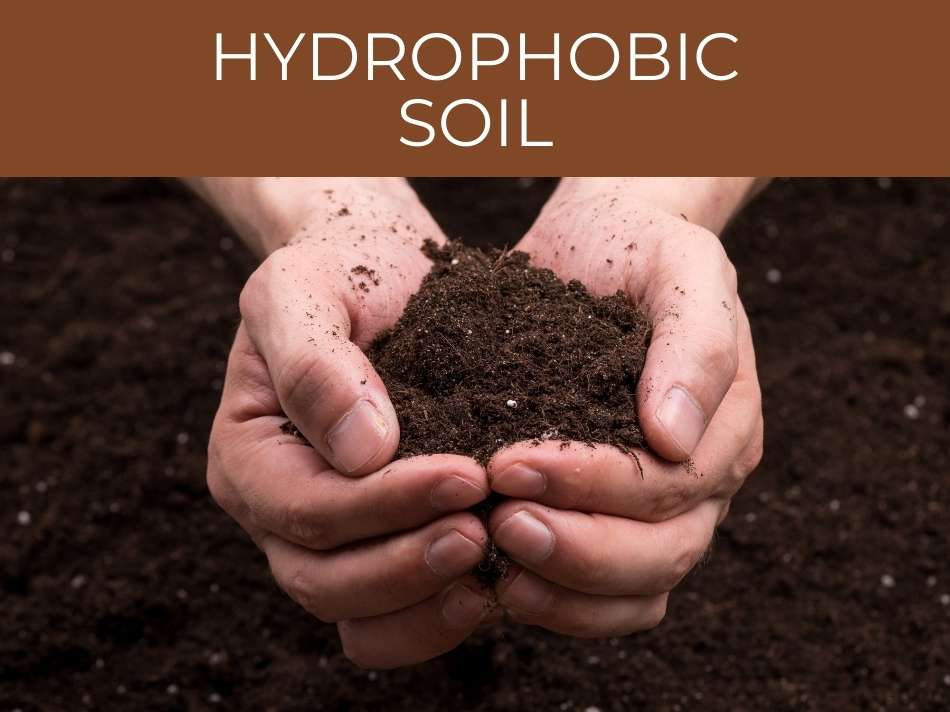
Hydrophobic Soil
Coupled with repelling water, when a waxy substance accumulates on soil particles, it is because it has become hydrophobic.
This hydrophobic soil repels water instead of absorbing it.
It usually occurs in sandier soils, old potting mixes, and soils with organic content that has not yet decayed.
Although sandy, coarse soils are where hydrophobic soil is most likely to be found, it may also occur in woods, pastures, agricultural plots, and scrubland.
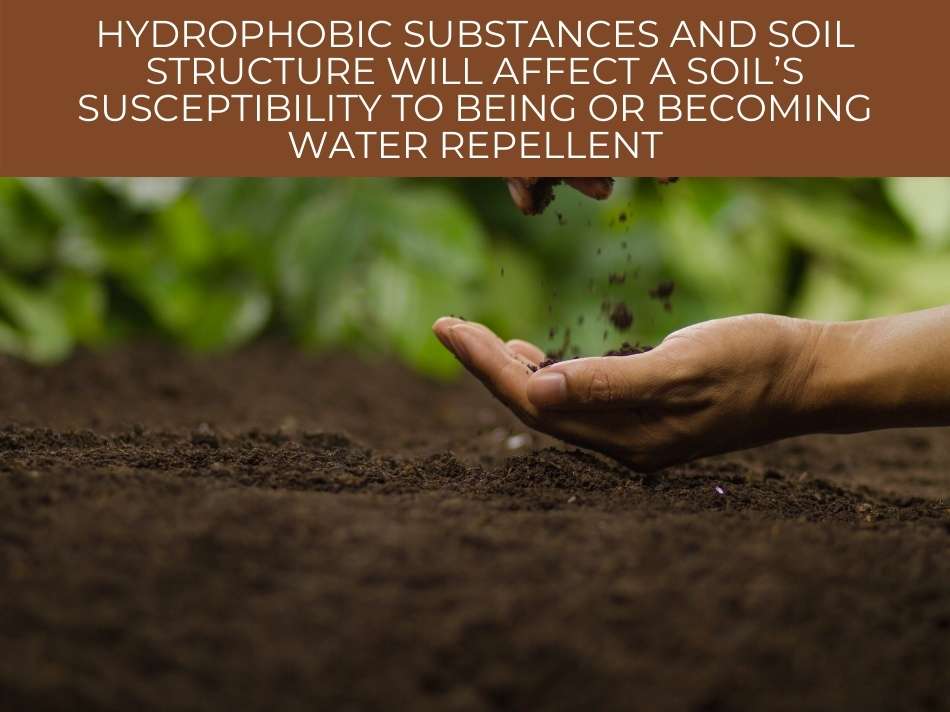
Hydrophobic substances and soil structure will affect a soil’s susceptibility to being or becoming water repellent. For example, sandy soils with a coarse texture that contains less than 5% clay are prone to developing water-repellent properties.
Water repellency can also happen in some soils with a more refined texture, albeit less frequently.
The hydrophobic layer is usually parallel to the soil, or a few millimeters below the surface.
However, this layer can vary in thickness and quantity.
Avoiding hydrophobic soil in the first place is the best course of action.
The best way to ensure you have healthy soil and a flourishing garden, especially in the winter, is a consistent watering program along with good compost.
See our complete guide to making compost for your garden.
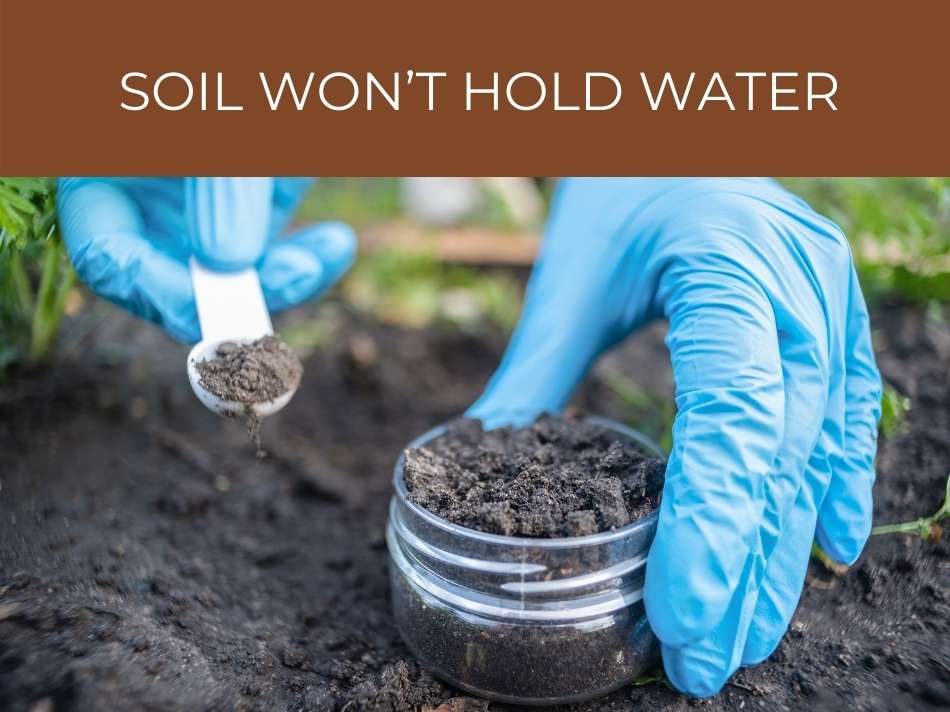
Soil Won’t Hold Water
Your soil is an issue if it continues to dry soon after watering.
The soil turns hydrophobic when it no longer absorbs water to supply moisture for plant development.
Long periods without rain or water might worsen the issue.
The soil particles may also develop a waxy layer, which happens when organic waste settles on the soil.
As it decomposes, it coats the soil particles with a waxy layer that inhibits water from entering.
The issue worsens and gets more challenging to fix the longer water remains on the soil’s surface.
Make sure you make your compost from a range of organic components.
The secret to healthy soil is variety!
For every 20-30 square feet of soil, add 1 cubic foot of well-rotted compost 6-8 inches deep. Then sprinkle with a 3-5 inchlayer of mulch, and thoroughly water it. After giving the soil a good soak with a hose for the next few days, use a soaker hose to get down to the roots of the plants.
When watered, flat garden beds are more likely to hold water than sloping garden beds, improving the chances that the water will finally soak in.
Use furrows (trenches) in your garden bed if you cannot make your garden beds flat.
These will slow the water flow and help concentrate it so that it stays close to your plants rather than rolling off and causing water loss.
How to set up an automatic watering system for your garden.
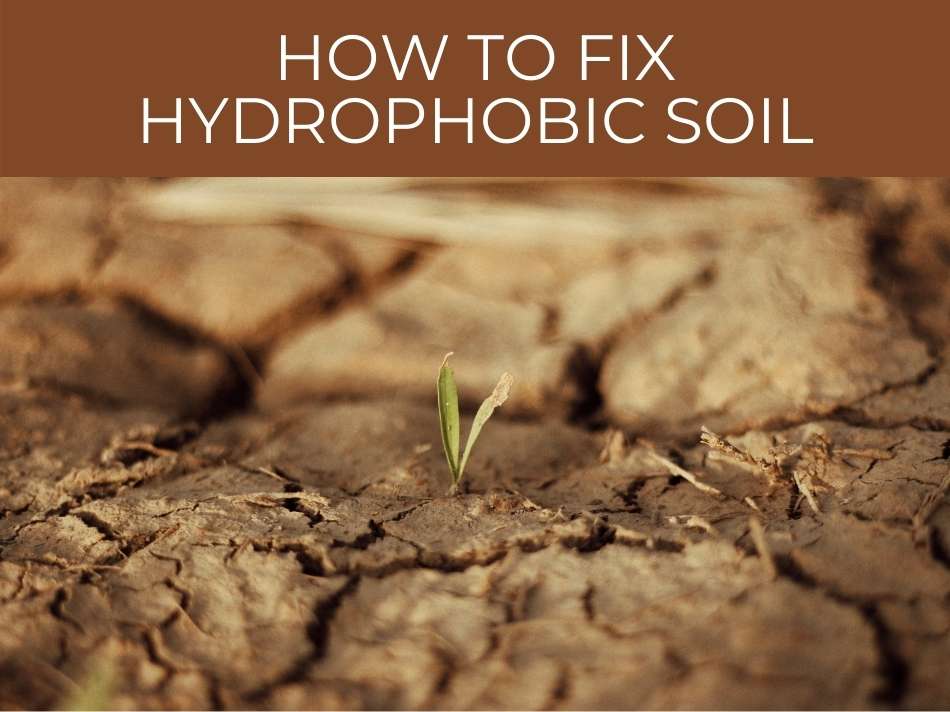
How To Fix Hydrophobic Soil
When your soil doesn’t absorb water, never fear. There are several things you can do.
First, a wetting agent can work by breaking down waxy coatings, cutting through the surface tension in the water, making it easier to penetrate the soil.
Another way is succession mulching, which involves varying the mulch between composted lawn clippings, pine bark, mushroom compost, sugarcane, and tea tree mulch.
Using water crystals or peat can also boost the water holding capacity of potted plants’ soil.
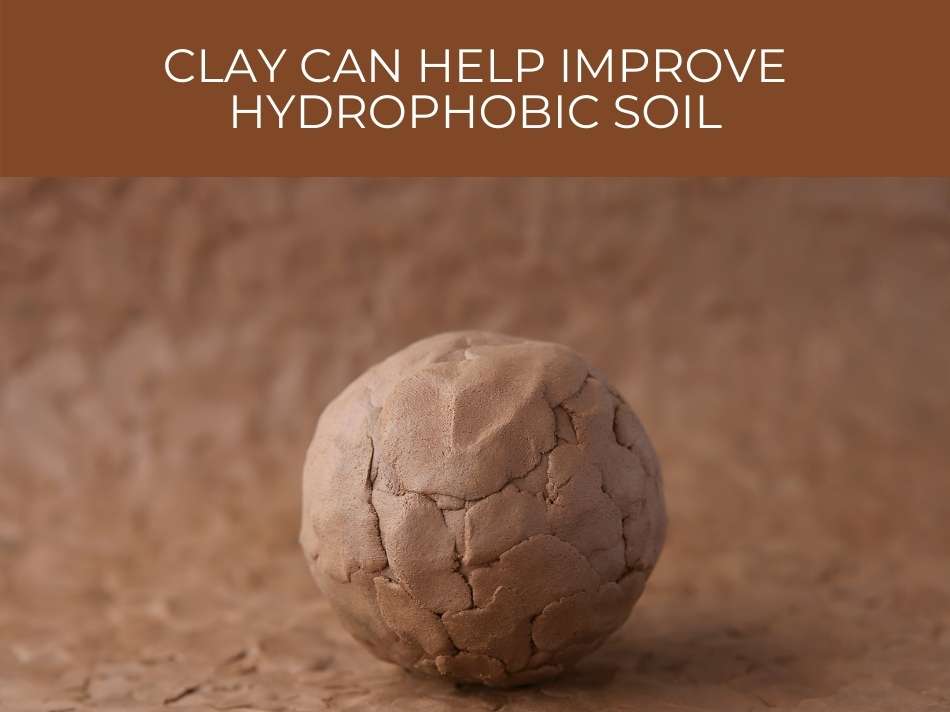
Clay can help improve hydrophobic soil and can be accomplished by mixing subsoil containing 30 to 50% clay into the topsoil. This practice is known as “claying.” The end goal is to build up the clay in the soil surface to at least 5%.
Depending on the depth of the clay, you can accomplish this by tearing, spading, digging, or spreading the clay.
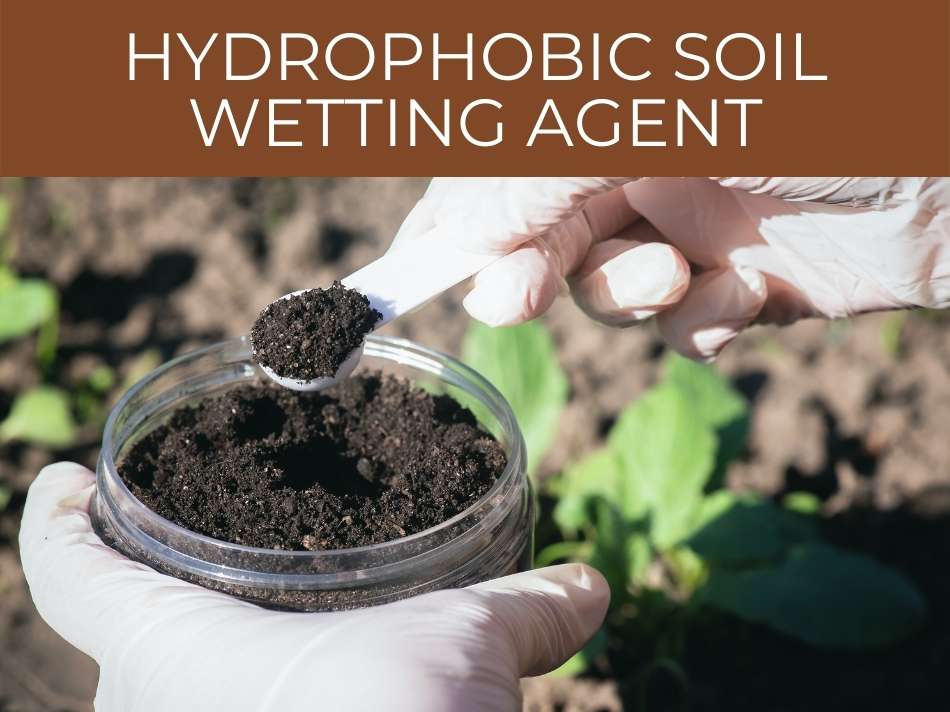
Hydrophobic Soil Wetting Agent
It might be troublesome to have dirt that repels water, but there are ways to resolve the issue.
A soil wetting agent lowers water’s surface tension to enable soil absorption.
Increasing permeability is the first step in addressing hydrophobic soil so that the life-boosting nutrients can enter the earth and perform their function.
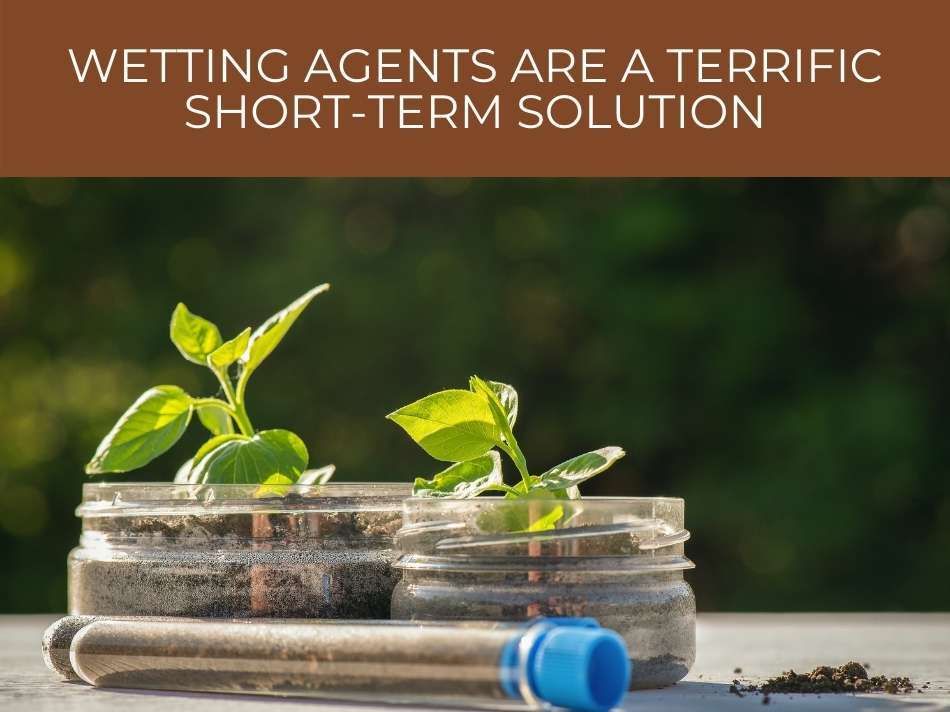
Wetting agents are a terrific short-term solution, but they won’t cure the problem permanently. So, when using these detergents in your garden, exercise caution; try to use environmentally friendly or biodegradable options, & check their suitability for use on your specific plant varieties.
More long-lasting fixes include mulching, organic matter addition, and periodic irrigation to keep the soil wet for extended periods.
All wetting agents include alcohol, and petroleum compounds, making them inappropriate for organic farming.
However, you could quickly make up a wetting agent using a mix of agar and aloe vera to sustain soil life.
The more traditional choice is to use an excellent biodegradable soap.
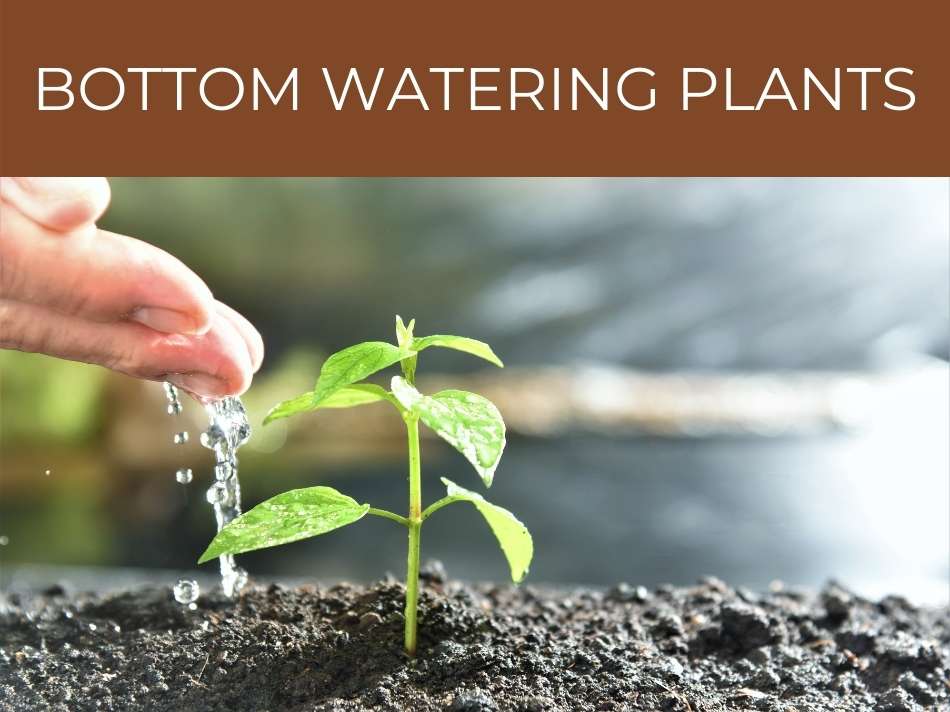
Bottom Watering Plants
Since hydrophobic soil resists re-wetting, regular watering is unlikely to refresh the soil.
However, bottom watering for rehydrating a pot with hydrophobic soil works well and may save your plant’s life.
It’s a sign that a potting mix has turned hydrophobic when water flows off the mixture or right through the pot and out of the drainage holes without being absorbed.
Avoid using older potting soil and change it periodically when growing in pots.
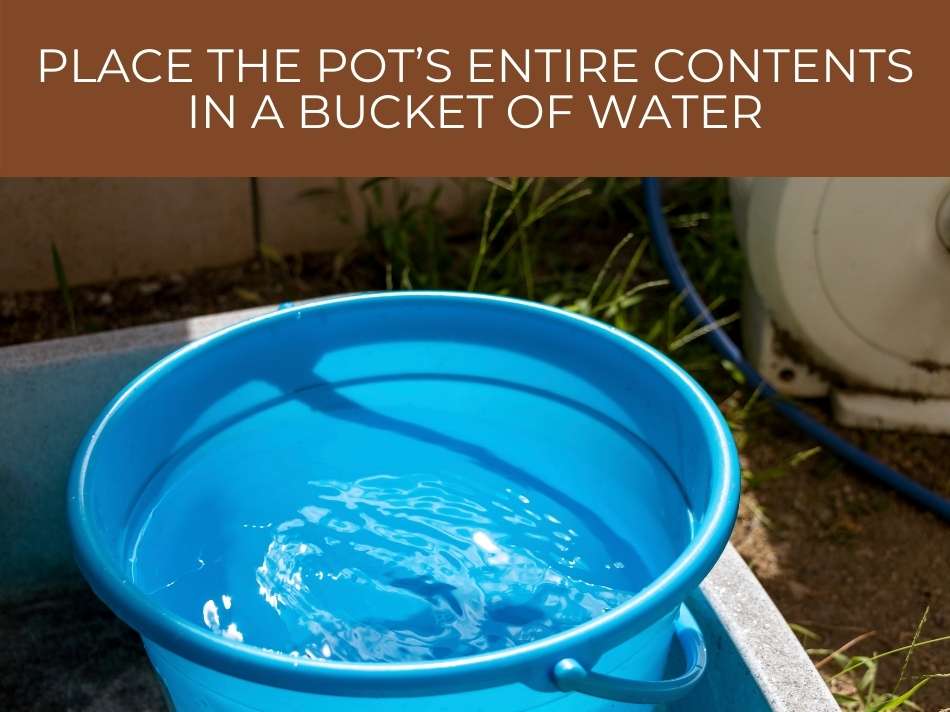
Place the pot’s entire contents in a bucket of water. The root ball will initially contain so much air that the pot will initially float. You will see the air bubbles exit when held under water because water displaces the air. Once the bubbles have subsided, remove the plant.
If the size permits, place the pot in a shallow dish of water and let the soil gradually absorb the water.
The ground may need to be thoroughly soaked for an hour or longer.
When the plants seem sufficiently hydrated, check them after an hour or two and take them out.
If soaking a large container, you must drizzle water into the soil slowly enough so that it may flow into the soil instead of escaping.
Be careful to set a timer if using a hose at a very slow trickle, so you don’t forget about it.
Find out whether you should use topsoil for houseplants.
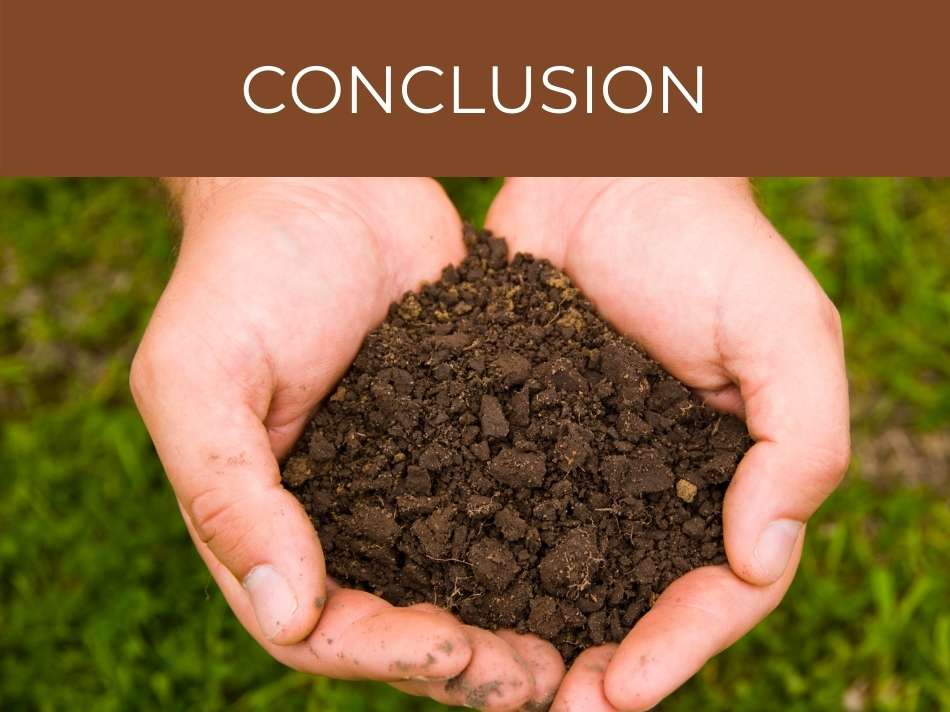
Conclusion
When soil becomes neglected, it can quickly dry up, perish, and become hydrophobic.
Every garden depends on its soil and its water supply to survive.
It is the cornerstone of anything gardening-related.
For your plants to thrive and grow, monitoring their health is crucial.

